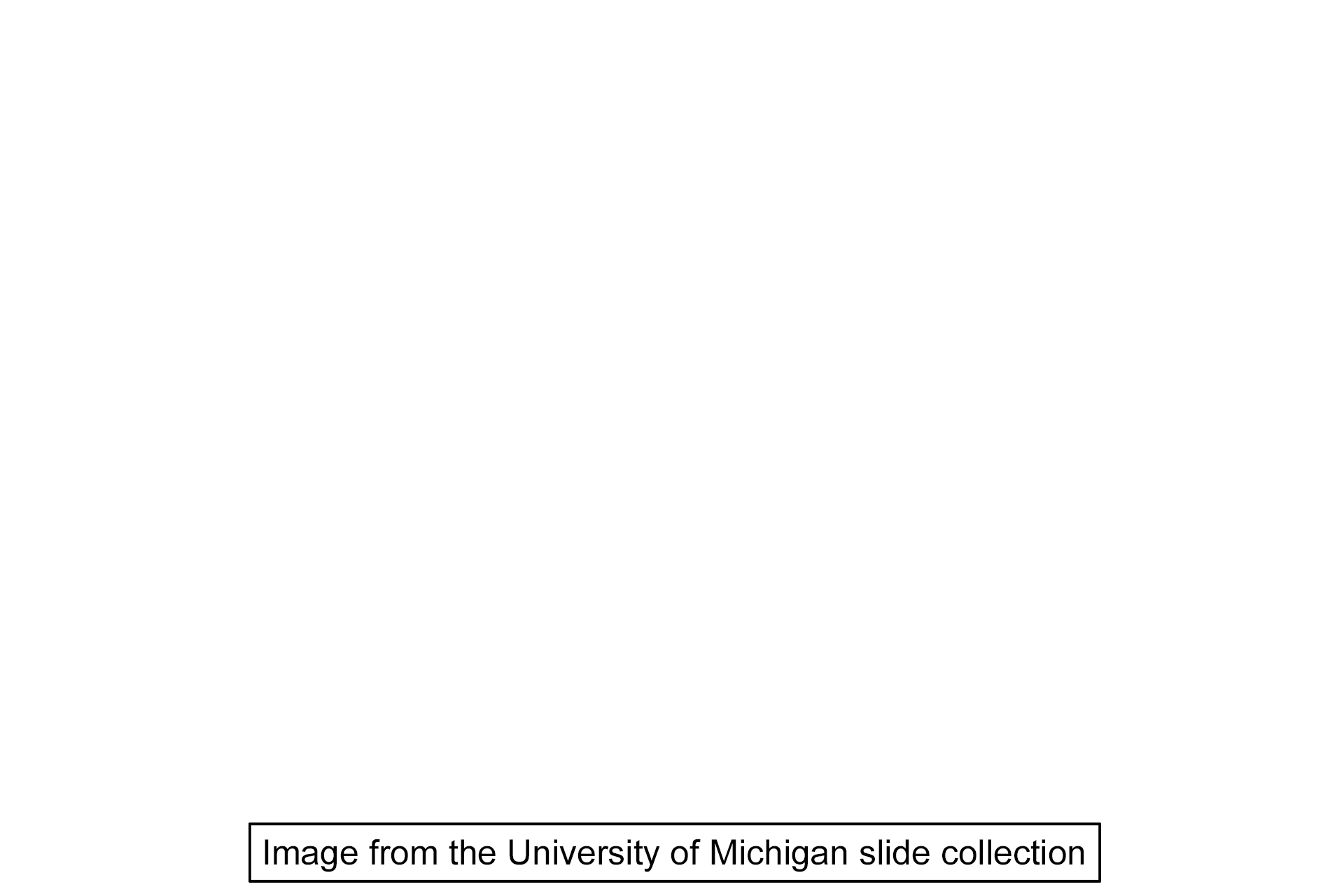
Spermatic cord
The duct of the epididymis exits the epididymis to continue as the ductus deferens in the spermatic cord. The spermatic cord, traversing the inguinal canal, is composed of the ductus deferens and its surrounding connective tissue, muscle, nerves and blood vessels, including the testicular artery and the pampiniform plexus of veins. 10x

Spermatic cord
The duct of the epididymis exits the epididymis to continue as the ductus deferens in the spermatic cord. The spermatic cord, traversing the inguinal canal, is composed of the ductus deferens and its surrounding connective tissue, muscle, nerves and blood vessels, including the testicular artery and the pampiniform plexus of veins. 10x

Ductus deferens >
The ductus deferens can be easily distinguished by its thick muscular wall and narrow lumen. After entering the abdominal cavity, the ductus deferens loops behind the ureter and continues through the prostate glands as the ejaculatory duct.

Testicular artery >
The testicular artery accompanies the ductus deferens and branches as it approaches the testis.

Pampiniform plexus >
The pampiniform plexus of veins, returning blood from the testis, surrounds the testicular arteries, serving as a countercurrent heat exchange mechanism to cool blood in the testicular artery as it approaches the testis.

Processus vaginalis >
The testis forms in the abdominal cavity in the fetus. As it descends into the scrotum, the fetal testis is accompanied by an extension of the peritoneal space, the processus vaginalis. This space, lined by peritoneum, continues into the scrotum where it surrounds the testis.

Cremaster muscle >
The cremaster muscle is skeletal muscle derived from the internal abdominal oblique muscle. In response to cooler ambient temperature, contraction of the cremaster muscle elevates the testis, drawing it closer to the abdominal wall.

Image source >
This image was taken of a slide from The University of Michigan collection.
